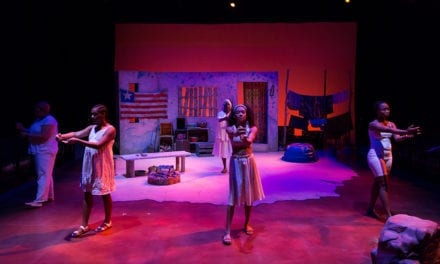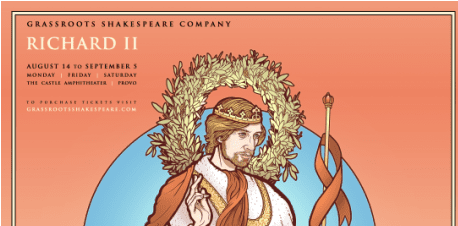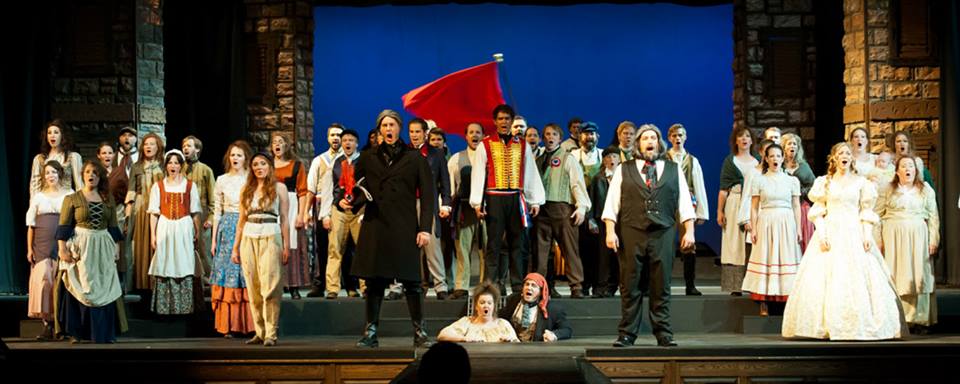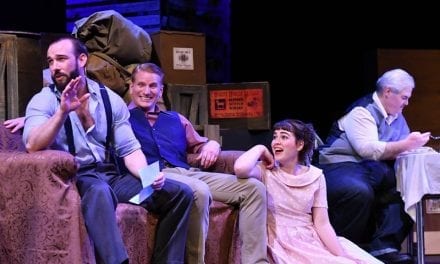SALT LAKE CITY — Browsing a list of the five highest grossing movies of 2013 so far shows that four of them are either sequels or prequels. Obviously, continuing the story of beloved characters is popular with audiences. Shakespeare figured this out long before Hollywood existed when he wrote Henry IV, Part 2, which is the continues the story of Prince Hal as he manages his friendship with the rogue Falstaff and tries to live up to his father’s expectations.
Helping to bring the audience up to speed is Rumor (Jason Sullivan) giving a synopsis of the previous play. This opening (reminiscent of medieval dramas that Shakespeare perhaps saw in his younger years) established a fun, inviting mood for the performance and helped me make the transition from the real world to the world of the play. Sullivan was not the only actor who effectively was able to convey the mood of a scene. In fact, every single scene of Henry IV, Part 2 was created so that it was always clear to me how I should feel about the action on stage. Given the fact that Grassroots Shakespeare Company does not have a director, this was an impressive accomplishment.
Although he’s the title character, Henry IV (TJ Christensen) does not have much stage time (just like in Part 1). Yet, Christensen was enjoyable as the king who tries to suppress a rebellion. Christensen was also effective in showing how his character worried about his son. After all, even if the rebellion were successfully put down, if his son Hal (played by Sullivan) were a weak king then another rebellion would inevitably happen. I also enjoyed Henry IV’s relationship with Prince Hal. Most powerful was the scene where Hal thought his father was dead and puts the crown on his own head. The conflict between the two in this scene was not flashy, but underneath their words was Henry’s years of resentment and Hal’s feeling of inadequacy. When the father and son reconciled, it was a powerful emotional moment that brought a touch of humanity to an otherwise mostly political play.
Daniel Fenton Anderson played the other featured character in the play, Falstaff. Anderson showed why the character is one Shakespeare’s most beloved: the character’s roguish demeanor, his foolishness with money, and his attempts at romance were delightful in every scene. Yet Anderson made it clear that the very qualities that make Falstaff so enjoyable to spend time with (whether as a friend or as an audience member) are also the same qualities that make him an unsuitable companion for an heir to the throne.
The supporting cast was worthy of the lead performers and the script. Daniel Whiting‘s performance as Lancaster was pleasing, especially as he subdued the archbishop of York, played by Eric Geels. Geels also played Northumblerand well; his first scene showed Northumberland’s grief at losing his son (an event that happened in Part 1), but the latter scenes demonstrated his position as a military leader.
Having attended every Grassroots Shakespeare production for the past two years, I have grown accustomed to the hodgepodge look of the performers’ costumes. Because the company focuses on Renaissance-era theatrical practices, each performer is in charge of their costume. The jumbled look of the costumes is part of the charm of a Grassroots show. But the costumes of Henry IV, Part 2 were more eye-catching than usual (such as Falstaff’s entire costume or Henry IV’s cloak).
One thing that hasn’t changed about Grassroots in this production is the interplay between actor and audience. Few productions in Utah ask the audience to do anything more than applaud. But Grassroots always invites audience members to cheer, boo, answer questions, and more. This give-and-take between the two groups of people is among my favorite characteristics of a Grassroots production, and I am thankful that the small audience on the night I saw the show didn’t diminish the actors’ willingness to engage their audience.
If I could change something about the production, though, it would for the roles that appear in both Part 1 and Part 2 to be played by the same performers. Because I had seen Grassroots’s Part 1 this summer, it took me a while to figure out Steven Pond was no longer playing Prince Hal, but was instead playing Bardolph. However, the change in actor from Part 1 to Part 2, did bring an unintentional double meaning to Hal’s line, “Presume not that I am the thing I was.”
Henry IV, Part 2 is a fast-paced, interesting production. Shakespeare’s history play has received a favorable treatment from the Grassroots cast, and many audience members will enjoy the contrasting moods, characters, and themes that the company has created in this show. Those who haven’t seen either the play or a Grassroots show should try to catch this production in Salt Lake or Utah Counties this month. Old Grassroots fans will likely find much of the atmosphere that have made the company so successful.









